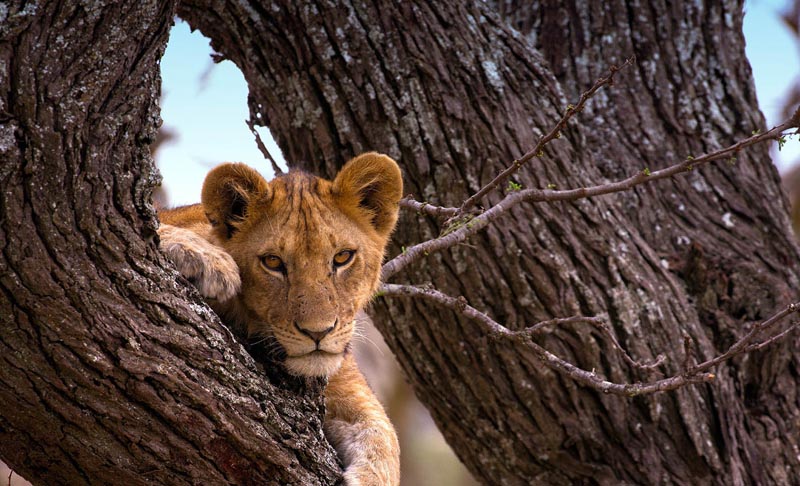Serengeti National Park
Serengeti National Park: Africa’s Ultimate Safari Destination
Serengeti National Park is one of Africa’s most iconic wildlife conservation areas, offering an unforgettable safari experience. Located in northern Tanzania, it spans approximately 14,750 square kilometers (5,700 square miles), making it one of the largest and most diverse ecosystems in Africa. Known for its vast savannas, incredible wildlife, and the world-famous Great Migration, Serengeti is a dream destination for nature lovers, photographers, and adventure seekers alike.
A Land of Endless Plains and Unique Ecosystems
The name “Serengeti” comes from the Maasai word Siringet, meaning “the place where the land runs forever”—a perfect description of its vast, open landscapes. However, Serengeti is more than just grasslands. It consists of diverse ecosystems, each offering a unique safari experience.
The Serengeti Plains are the heart of the park, known for their wide-open landscapes and large predator populations. The Western Corridor, marked by riverine forests and the Grumeti River, is home to massive crocodiles and hippos. In the Northern Serengeti, the terrain becomes more rugged, and this is where the dramatic Mara River crossings occur during the Great Migration. The Lobo Hills and Rock Kopjes provide excellent hiding spots for leopards, lions, and a variety of bird species, while the Seronera Valley is one of the best areas for year-round wildlife sightings.


The Great Migration: One of Nature’s Greatest Spectacles
Serengeti is best known for the Great Migration, one of the most breathtaking wildlife events on Earth. Each year, over 1.5 million wildebeest, accompanied by 200,000 zebras and thousands of gazelles, embark on a circular journey of survival, moving in search of fresh grazing land. This epic migration is filled with challenges, including dangerous river crossings, predator attacks, and extreme weather conditions.
The journey begins in the southern Serengeti during the calving season (January to March), when thousands of wildebeest give birth, attracting predators like lions, cheetahs, and hyenas. By April to June, the herds begin their long journey northward through the Western Corridor, where they face crocodile-infested waters in the Grumeti River. Between July and October, the most thrilling part of the migration unfolds as the herds attempt the deadly Mara River crossings in the Northern Serengeti, where strong currents and waiting crocodiles make survival uncertain. By November and December, the herds move back south, completing the cycle.
Witnessing the Great Migration is an awe-inspiring experience, making Serengeti a bucket-list destination for safari enthusiasts.


Incredible Wildlife & Birdlife
Beyond the Great Migration, Serengeti is home to over 70 large mammal species and 500 bird species, making it one of the best places in the world for wildlife viewing. The park is famous for its Big Five—lions, leopards, elephants, buffaloes, and rhinos—as well as a variety of other predators and herbivores.
Serengeti hosts one of the largest lion populations in Africa, with over 3,000 lions roaming the park. Leopards, known for their elusive nature, are commonly spotted in the Seronera Valley and around rock kopjes. Large elephant herds can be seen near the rivers and woodlands, while buffaloes are found grazing throughout the park. Rhinos, though rare, are primarily located in the Moru Kopjes area.
Other predators include cheetahs, often seen hunting in the open plains, hyenas, known for their intelligence and scavenging skills, and African wild dogs, which are rare but can sometimes be spotted in remote areas. The park’s rivers and wetlands are home to hippos and Nile crocodiles, while antelopes such as topis, elands, impalas, and gazelles roam freely.
For bird enthusiasts, Serengeti offers an impressive variety of species, including the Secretary Bird, Martial Eagle, Lilac-breasted Roller, and Ostriches. The park’s diverse habitats make it a prime location for birdwatching year-round.
Best Time to Visit Serengeti
Serengeti is a year-round safari destination, but the best time to visit depends on what you want to see.
The dry season (June to October) is ideal for general wildlife viewing, as animals gather around water sources, making sightings easier. This period is also when the Mara River crossings take place, offering dramatic scenes of wildebeest battling crocodiles.
From December to March, the green season offers lush landscapes and the calving season, where thousands of baby wildebeest are born. This attracts predators, leading to thrilling hunting scenes. The rainy season (April to May) is the least crowded time to visit, with beautiful green scenery, fewer tourists, and excellent photography opportunities, though some roads may become difficult to navigate.

